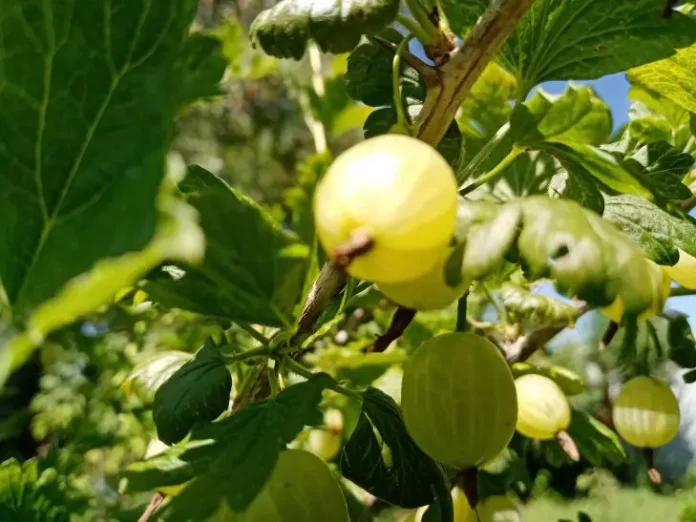Gooseberries are not as difficult to grow as you might think. It’s important to know a few things.
Why gooseberries grow poorly
It is important to remember that gooseberries do not grow well in the wrong growing location. The shrub does not like waterlogged and acidic soil.
In addition, the plant does not like dense plantings and unfertile soil.
Sometimes gooseberries suffer from pests – birds, powdery mildew and hungry gooseberry sawfly larvae.
If you think your shrub has these pests, it is important to get rid of it.
What to do if gooseberries do not bear fruit
If the gooseberry does not bear fruit, you need to transplant the bush to a more suitable place where it will receive enough sunlight.
It is also important that the shrub does not suffer from waterlogging and grows in neutral or slightly acidic soil. In this case, you can count on the fruits.
Experienced gardeners recommend using mineral and organic fertilizers during and after fruiting.
Potassium sulfate, superphosphate or potassium salt are ideal.



Miksi karviaiset eivät kanna hedelmää hyvin? Onko kasveillasi koskaan ollut samanlaisia ongelmia?
Gooseberries are quite picky when it comes to their growing conditions. If the shrub is not producing fruit, it might be due to the wrong location, pests like birds or sawfly larvae, or nutrient deficiencies. Experienced gardeners suggest moving the bush to a sunnier spot with well-draining soil, ensuring it’s not waterlogged or in acidic conditions. Adding mineral and organic fertilizers can also improve fruiting outcomes.